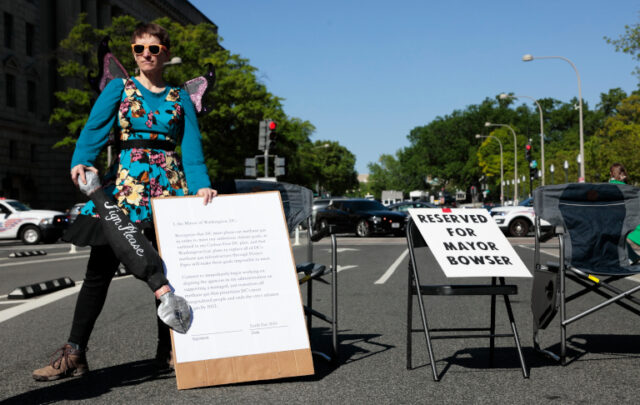 My thoughts and concern goes out to those struggling with this unprecedented American storm in the northeast. As I write this early on Tuesday morning, watching this game-changer of a storm, a myriad of thoughts go through my head. The storm event is just the beginning. Rivers will flood, and snows will accumulate. Recovery will be long and slow. Recovery will be hampered by problems with energy delivery, complexity, and density of populations. Just in time, digitized systems that are overly complex will be challenged. News will filter out slowly, with initial optimism about the extent of the damage, followed by increasingly pessimistic reports about the size and extent of the problems as communication begins to be reestablished. This post describes Sandy as a catastrophic pulse in relation to the problems of dense urban living, complexity, and digitization.
My thoughts and concern goes out to those struggling with this unprecedented American storm in the northeast. As I write this early on Tuesday morning, watching this game-changer of a storm, a myriad of thoughts go through my head. The storm event is just the beginning. Rivers will flood, and snows will accumulate. Recovery will be long and slow. Recovery will be hampered by problems with energy delivery, complexity, and density of populations. Just in time, digitized systems that are overly complex will be challenged. News will filter out slowly, with initial optimism about the extent of the damage, followed by increasingly pessimistic reports about the size and extent of the problems as communication begins to be reestablished. This post describes Sandy as a catastrophic pulse in relation to the problems of dense urban living, complexity, and digitization.
First, the big picture–power
What are the ramifications at the larger scale? Is this the beginning of the end to high density living in NYC? Most of this is eventually recoverable, if there is enough manpower and enough fuel. I have faith in the American can-do attitude and ability to knuckle down in a crisis. But that can-do attitude must be backed by energy and resources supplied by a complex society. And many of the complex systems that allow dense living depend on a steady supply of energy.
Power and transportation are inextricably linked in dense urban areas. How long will it take to get the arterial subways running again in New York City (NYC)? Is any part of NYC really operable without the high volume subway system to get manpower where it needs to go? How do we get gasoline and diesel to the places that need it for backup generator operation, and what happens if we cannot do so? What will happen to gas supply for cars, and how long will that be disrupted due to power outages to gas stations, flooded refineries, and slowed deliveries of fuel? What does flooding and power supply problems at major airline hubs do to global supply chains? What about demolished high voltage transformers, which are very difficult to replace, requiring months of lead time if they have to be ordered? How will the replacement process be complicated by connected complexities? This is an example of the problem of scale—how many transformers are out over how wide of an area? If the problems are small and local, repair is relatively easy. Larger scale problems at multiple nodes creates interconnected dependencies.
Power is also linked to communication. Landlines are disrupted by downed telephone wires, and cellphones are disrupted by cell tower power failures and inability to keep phones charged. Servers need energy, and networks require participants with operating wifi and power. Problems with communication complicate recovery during and after the chaos of crisis. Because of the interconnected nature of and our dependence on complex digital systems, this will all complicate recovery.
What about the nukes?
Of our energy sources, the most dangerous is nuclear power, since the cooling of reactors and spent fuel pools (even those that are offline) requires a steady supply of electricity, diesel generators, and/or batteries. Will we have a Fukushima-like meltdown at one of the many nuclear plants in the northeast this week due to sustained power outages? Time will tell. Oyster Creek Nuclear Power Plant (NPP) had offloaded part of its fuel last week into a spent fuel pool, and then experienced flooding. Latest reports suggest that the spent fuel pools are not being cooled adequately, and the in-house fire suppression system may have to be used to cool the pools. To quote a wag on ENENews.com, the words fire hose and nuclear plant should not be used in the same sentence.
Indian Point NPP also experienced a shutdown, and other plants had other problems. We still need to wait and see about other NPPs on flooding rivers and the Great Lakes. So we will see what happens there. Loss of cooling accidents (LOCA) can occur in ~100 minutes for nuclear reactors, and ~25 hours for spent fuel pools, depending on a number of variables.
Offline and damaged nuclear power plants will lower baseline power in the short-term and perhaps the long-term, too. Loss of consistent baseline power from NPPs reduces consistency of overall utility power, leading to more blackouts. This is how complexity devolves. If there is a meltdown, that is a game-changer. We can recover from most of these problems and keep up density in urban centers with just about any of these problems, if energy continues to flow. But if there is a meltdown at a NPP, we will not be able to maintain business as usual (BAU), as that impacts the environment in a permanent, deadly fashion over the long-term. We must decommission these plants and do something with the spent fuel for longer-term storage if we are to hope for any future existence in the northeast. The sooner we mothball these dangerous NPPs and adapt to a lower energy basis, the safer we will be. Isn’t it just a matter of time until a hurricane, or a tornado, or a widespread power outage causes a meltdown and permanent change in BAU in the US?
But we shouldn’t have to sweat nuclear power. Here is where peoples’ mental models, blindspots, and lack of imagination about their BAU world may begin to change. For example, what happens now to the environmentalists’ cognitive dissonance about the priority danger of climate change when the impact of climate change in the form of a big storm causes a nuclear power plant meltdown, if not now, then most assuredly later? Bill McKibben, are you listening?
Healthcare and Transportation
Hospitals were reportedly challenged during the storm, with reports of nurses in hospitals in NYC having to manually ventilate patients when backup generators failed. At one point, there was talk of carrying 5 gallon cans of diesel fuel up stairways to the 60 gallon/hour primary generator on the top floor, whose lower-level pumps had failed. NYU Medical Center was evacuated. I can only imagine the chaos without lights, elevators, or ventilators. Perhaps hospitals in NYC will not meet the challenge if there is no power. Getting supplies and staff into these hospitals will be a huge challenge. Injuries over a very wide area will go up as sewage systems fail, chainsaw injuries, burns, electrocutions, explosions, and other recovery traumas accumulate. Disabled people and those with other issues will be challenged by problems with failures of complex systems in a myriad of ways.
We’ll just print more money
I have already heard/read a number of comments about the funding of recovery. Can we just print more money for our burgeoning recovery needs? Will printing money bring the needed extra energy and materials to the area to return the area to BAU? That system works only as long as the energy keeps flowing. Since the US imports two-thirds of its energy, that is the bottom line. It’s all about the oil. As long as printing money brings a

Header Reuters Eduardo Munoz
consistent flow of oil and gas to the area, then we can keep BAU running by waving our magic wand, at least to some extent. If printing money stops working as a pump primer, then the energy inputs may slow. What are the ramifications of basic problems like a flooded subways in a trading hub on the complex, digital functions in a global system? Especially when that system is reliant on high frequency trading, complex manipulations, and active manipulation and involvement by Wall Street? That’s the Goldman Sachs New World Headquarters blazing away in the NYC skyline as Sandy hit, powered by generators. At the same time, patients were getting evacuated in NYC down stairways from hospitals with failed generators.
Rebuilding on the beach?
Shouldn’t we be taking a breather here and asking ourselves whether rebuilding anything at sea level in descent is simply crazy? It is time to stop handing out money through federal flood insurance for wealthy people to rebuild second homes on beaches. There will be more of these storms and other unexpected extreme weather in the future due to climate change. It is time to adapt.
And is this the tipping point for the insurance industry, which was already on unstable ground? Will the insurance industry keep adding clauses and keep leaving states, until they write themselves out of the industry? Or will people drop coverage as budgets tighten and insurance becomes less of a priority? Or both?
Pepsi, Coke, or spring water?
Will some states in the northeast have delayed elections? Time will tell. What does chaos and unhappiness in one fifth (or more) of the American population mean for this election when they eventually get to vote? How will the complexities of digitized voting be disrupted? How will the flood of corporate money react to the chaos this week? Like Chris Hedges, I’m registering my protest vote and voting my values for the Green Party, especially since my liberal presidential vote in red-state Alaska does not count.
Will you get to vote next week? When will the power come back on? Do we have bigger worries than water in the basement? Will Superstorm Sandy show the hidden frailties of our system, becoming a tipping point in our understanding about the energy basis for society? Will a NPP melt down now and become a game changer, or will we have to wait until next time a storm like this happens? Is this the evolution of a new normal for the northeast US?






